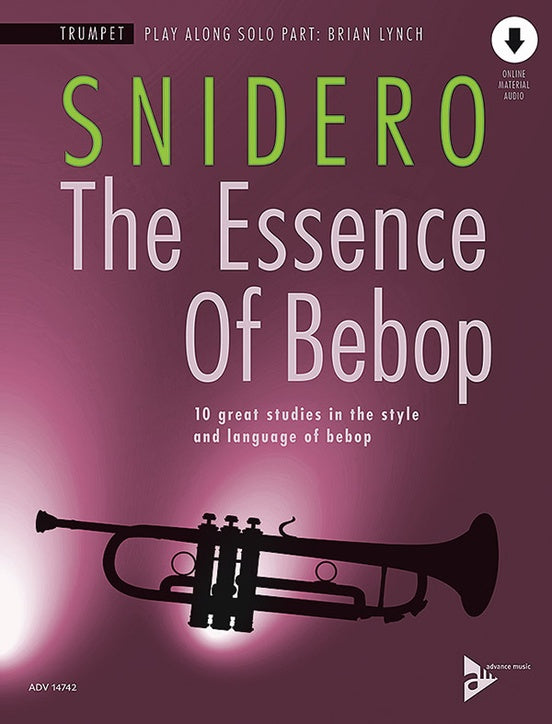Snidero: The Essence of Bebop - Trumpet
In stock and typically ships within 1 business day.
- Composer: Jim Snidero (1958-)
- Format: Book with Audio Download
- Instrumentation: Trumpet
- ISMN:
- Size: 9.1 x 11.9 inches
Listen
Description
The Essence of Bebop is by critically acclaimed New York saxophonist Jim Snidero and reveals the heart and soul of this groundbreaking jazz style and is the first real "manual" for mastering bebOp.
The 10 fun-to-play studies are inspired by Miles Davis, Charlie Parker, Dizzy Gillespie, Sonny Rollins, John Coltrane, and many more, offering a unique basis for in-depth study and analysis. Historical insights as well as recommended listening and reading make this edition an indispensable part of jazz education.
Each etude includes a study guide that covers jazz theory, but also goes well beyond the math, providing insight into how bebop masters mold solos into profound musical statements. Concepts of shape, timing, balance and pacing provide the framework in which ideas unfold and flow. Additional examples, practice suggestions, historical perspectives, listening and reading suggestions (60-plus pages total) result in an instant classic that's perfect for individual or classroom study.
The downloadable play-along recording has versions with and without the soloist, and features Brian Lynch (trumpet), Mike LeDonne (piano), Peter Washington (bass), and Joe Farnsworth (drums). Brian Lynch is one of the only trumpet players to have been a member of both Art Blakey's Jazz Messengers and Horace Silver's Quintet. He has been included in Downbeat Magazine critics polls, is a multi-Grammy winner with over 20 recordings as a leader, and is a professor at the University of Miami.
Publishers use a lot of words to describe what they sell, and we know it can be confusing. We've tried to be as clear as possible to make sure you get exactly what you are looking for. Below are descriptions of the terms that we use to describe the various formats that music often comes in.
Choral Score
A score for vocalists that only contains the vocal lines. The instrumental parts are not there for reference. Generally, cheaper than a vocal score and requires multiple copies for purchase.
Facsimile
Reproductions of the original hand-written scores from the composer.
Full Score
For ensemble music, this indicates that the edition contains all parts on a single system (there are not separate parts for each player). In larger ensembles, this is for the conductor.
Hardcover
Hardbound. Generally either linen-covered or half-leather.
Orchestral Parts
Similar to a wind set, this is a collection of parts. In the case of strings, the numbers listed are the number of copies included, though generally these are available individually (often with minimum quantities required).
Paperback
When publishers offer multiple bindings (e.g. hardcover) or study scores, this is the "standard" version. If you're planning to play the music, this is probably what you want.
Performance / Playing Score
A score of the music containing all parts on one system, intended for players to share. There are not separate parts for each player.
Set of Parts
For ensemble music, this indicates that there are separate individual parts for each player.
Solo Part with Piano Reduction
For solo pieces with orchestra, this is a version that contains a piano reduction of the orchestra parts. For piano pieces, two copies are typically needed for performance.
Study Score
A small (think choral size) copy of the complete score meant for studying, and not playing. They make great add-ons when learning concertos and small chamber works.
Vocal Score
A score prepared for vocalists that includes the piano/organ part or a reduction of the instrumental parts.
Wind Set
For orchestral music, this is a collection of wind and percussion parts. The specific quantities of each instrument are notated.
With Audio
In addition to the printed music, the edition contains recordings of the pieces. This may be an included CD, or access to files on the internet.
With / Without Fingering (Markings)
Some publishers prepare two copies - a pure Urtext edition that includes no fingering (or bowing) suggestions and a lightly edited version that includes a minimal number of editorial markings.


